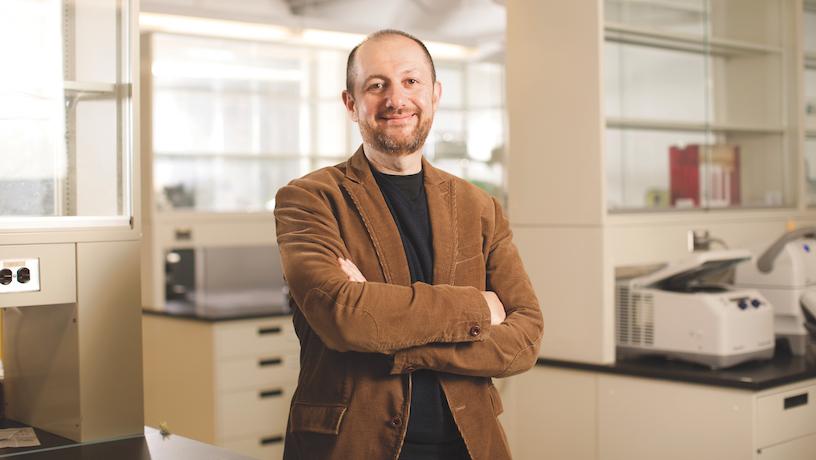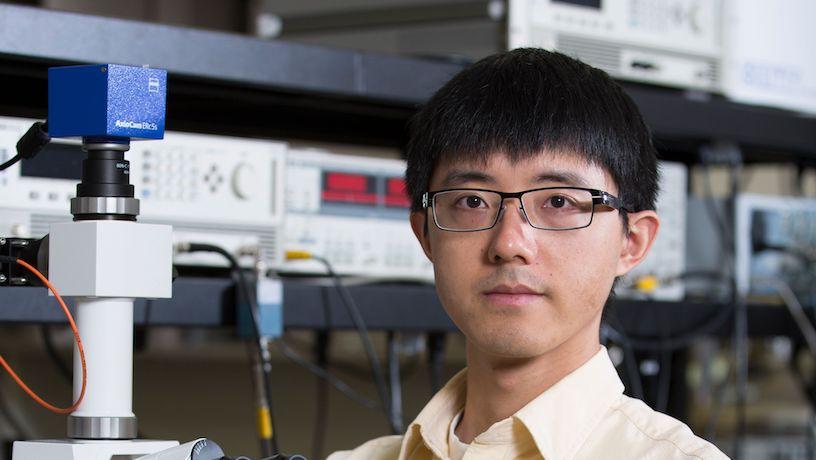Oleg Gang Wins MURI Grant for Responsive 3D Nanomaterials
Columbia Engineering leads U.S. and Australia team to focus on a tool box for creating 3D nano-architectures that respond to stimuli.

Oleg Gang. Credit: Jeffrey Schifmann
Oleg Gang, professor of chemical engineering and applied physics and applied mathematics, has received a Department of Defense Multidisciplinary University Research Initiative (MURI) grant for a project he is leading on functionally switchable nanomaterials. The team includes Columbia Engineering colleague Nanfang Yu, professor of applied physics and applied mathematics, as well as investigators from Johns Hopkins, University of Michigan, and University of Wisconsin-Madison, and a co-team from Australia. The anticipated amount is $6.25M with an additional $5M for their Australian partners.

Nanfang Yu. Credit: Jeffrey Schifmann
The project, “Bio-architected Responsive Materials with 3D Nanoscale Order,” will help advance the MURI program’s mission to develop new technologies that address the Department of Defense’s stated challenges by bringing together insights from multiple disciplines. The Columbia Engineering proposal will leverage expertise in various areas, including nanoparticle assembly, responsive macromolecules, molecular circuits for signal processing, optical nanomaterials, as well as energy transduction and reconfigurations at various scales. The major goal of this effort is to establish a new class of nanomaterials systems that can operate as complex nanoscale devices, from receiving signals to processing received information to making decisions about next actions, and to switching structural states and functional properties.
“We are thrilled to be chosen among the projects for this year’s MURI grants,” said Gang, who joined Columbia Engineering in 2016 and is the leader for the Soft Matter and Biomaterials Theme at the Center for Functional Nanomaterials at Brookhaven National Laboratory. “This project is an incredibly collaborative effort with partners from the U.S. and Australia who have broad expertise in experimental and computational materials science and nanotechnology. We’re confident that bringing together traditionally separated fields and unexplored ideas will result in some truly transformative concepts.”
While biological organisms are able to respond and adapt to external signals, man-made material systems have not yet been developed that can mimic these responses to stimuli. Gang’s team seeks to understand the underlying principles at work in such signal-to-action mechanisms in order to build 3D dynamic materials systems using nanoscale materials. For their project, they plan to create switchable nanomaterials with engineered optical and magnetic functions; in the long run, the proposed platform could be used for a broad range of nanoscale objects and functions.
The highly competitive MURI grants were given to 28 projects from among 340 proposals. The kick-off meeting for the project was hosted this summer by Gang, who recently won a Keck Foundation Award for a collaborative interdisciplinary project on novel ways to generate designed quantum systems with Professor Vlad Pribiag from the University of Minnesota.
